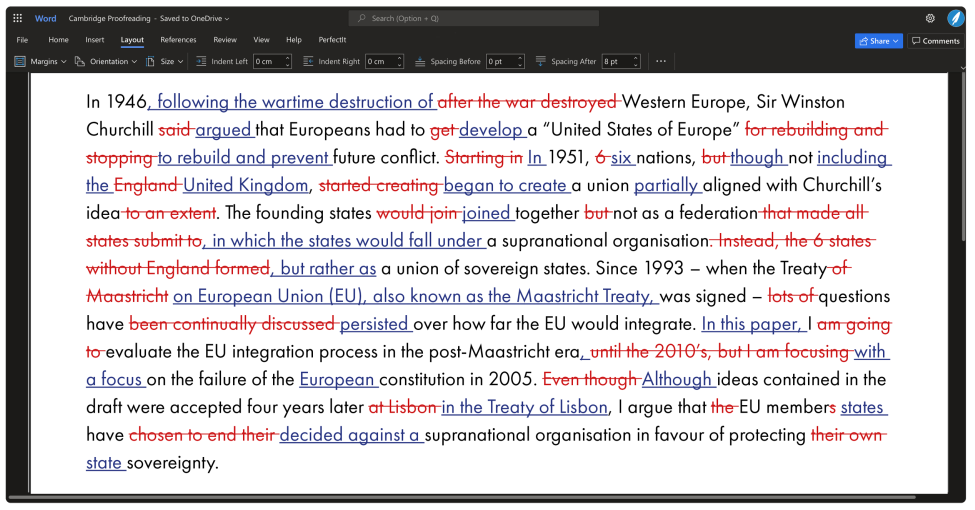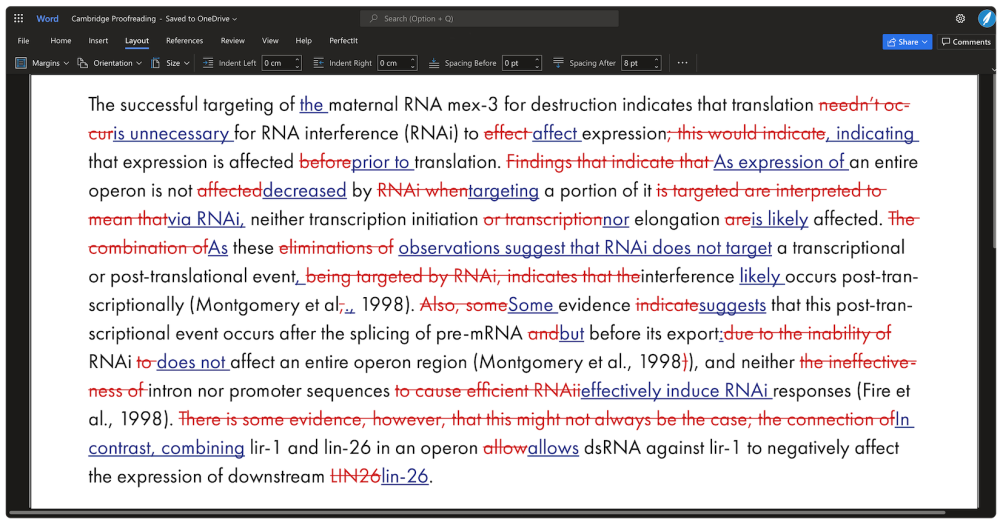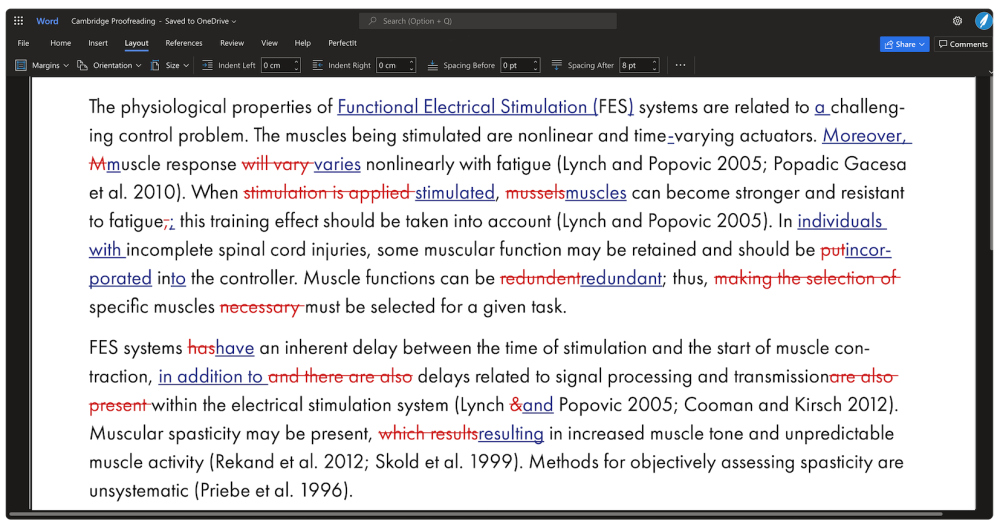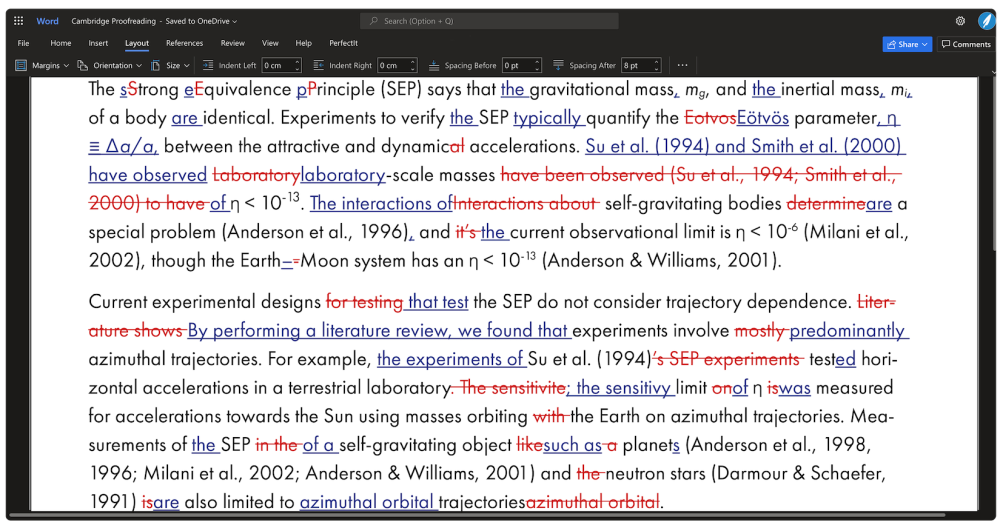How we’ll edit and proofread your document
Our experienced editors are available 24/7/365 to rigorously review and comprehensively improve your writing.
Microsoft Word’s Track Changes
We use Word’s Track Changes feature to highlight our amendments. We have alternative options for other formats, including PDF and LaTeX.
Improved style and appropriate register
We improve your style, diction and tone to ensure that your document is written in the appropriate register.
I’ve changed “needn’t occur” to “is unnecessary” to enhance the formality of the text. In general, contractions (needn’t, can’t, won’t, etc.) should be avoided in academic writing.
Dr Smith, PhD
Perfect clarity and structure
We’ll correct or query awkward phrasing and ambiguity to ensure that your writing is clearly expressed and easy to understand.
I would recommend being more specific here; do the physiological properties of FES systems create a challenging control problem or do they have to solve or address a challenging control problem?
Dr Smith, PhD
Grammar, punctuation and readability
We fix errors related to grammar, punctuation and readability.
When a system, theory, model, or procedure is named after two or more entities, the nouns are conventionally joined using an en dash. The same rule applies whenever the elements of a compound are considered equivalent, so the phrases “parent–child relationship”, “cost–benefit analysis”, etc., use an en dash rather than a hyphen.
Dr Smith, PhD
General feedback and advice
We provide feedback and advice on the composition of the writing, both within the document and in the Editor’s Summary Report (for documents over 3,000 words).
To make sure an abbreviation is consistently applied throughout the document, a useful tip is to search for the term using Control F (Command F on a Mac).
Dr Smith, PhD














